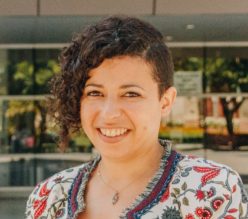I have begun an archives technician internship at the San Francisco Maritime Museum, and I am overjoyed to be back in an archival setting. On my first day, my supervisor presented me with two bankers boxes of curling, browning papers, and I couldn’t help but note aloud my immediate excitement at seeing them, even before I had any idea of their contents or significance. My supervisor commented, “You’re in good company.” I suppose it’s not everyone who would look forward to spending several hours sifting through the financial records of 1940s shipbuilders — though even as I type that, it’s difficult for me to imagine why not!
Most of the papers were straightforward business documents, but a few curiosities stood out to my novice eyes: a slip of paper listing lunches for crewmen including twelve liters of milk, a $15 receipt for an accordion player to perform at a landing, a paragraph describing the design of a galley in minute detail, and blueprints of the materials the shipbuilders had ordered.
It never ceases to amaze me what a box of historical documents can reveal. This is why I love working in archives. Today, while performing an initial review that will allow me to write up an inventory, I had hands full of evidence of the amount of manufacturing activity that used to happen in the San Francisco Bay Area. The boxes I reviewed included purchase orders and invoices from steel mills and copper forges in the same cities where we now have tech startups. This adds another piece to the story of how the area I call home has changed over the last several generations. My supervisor also pointed out how much of the manufacturing was driven by the needs of World War II.
All of this from two boxes of curling, browning paper. It is truly a privilege to have access to history in this way. My hope is that as I learn the art and science of this profession, I will discover ways to engage more people with the mind-bending joy of learning through primary source material.
